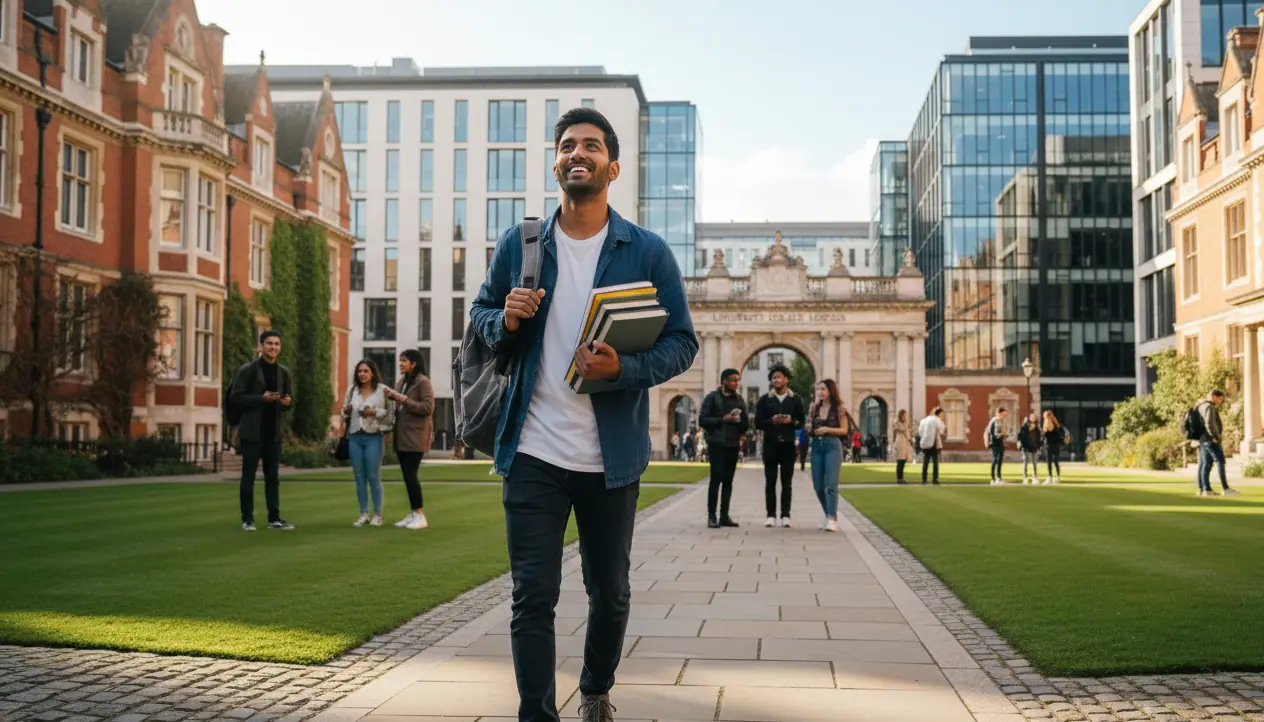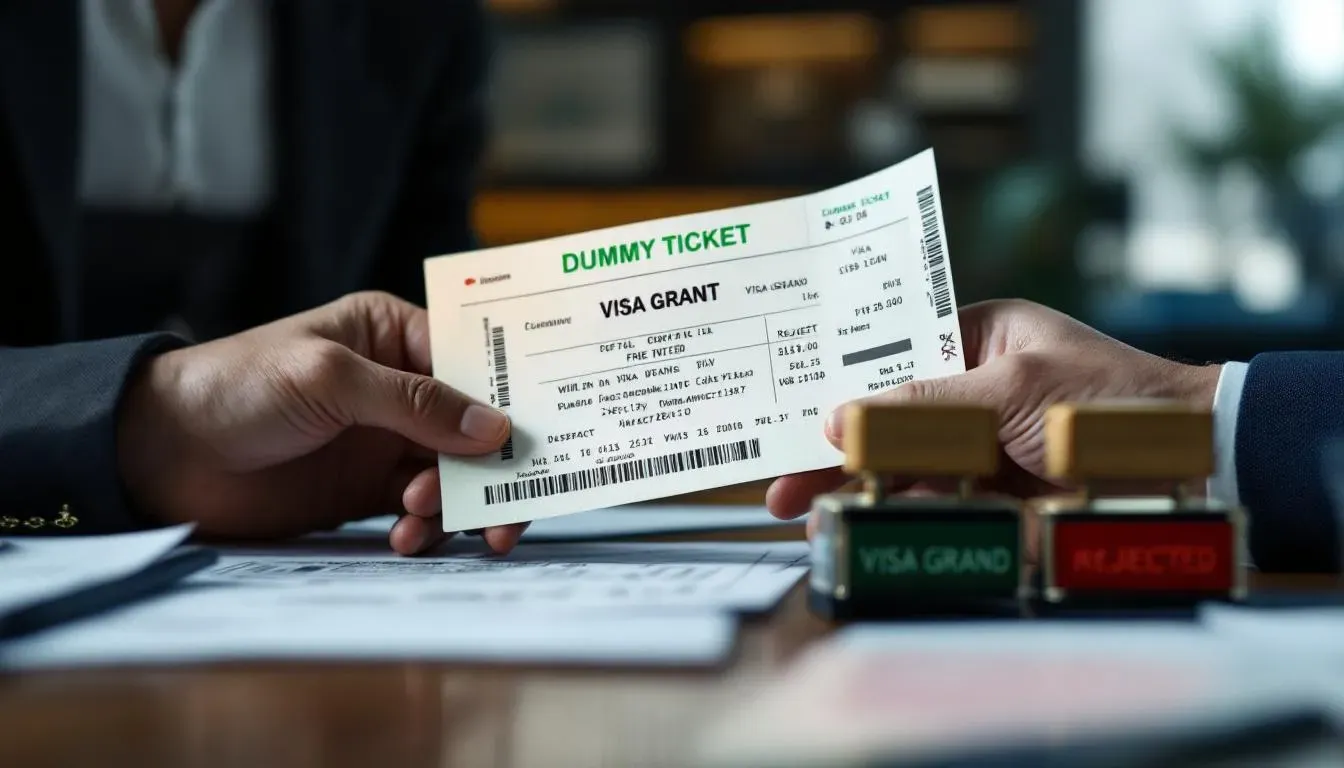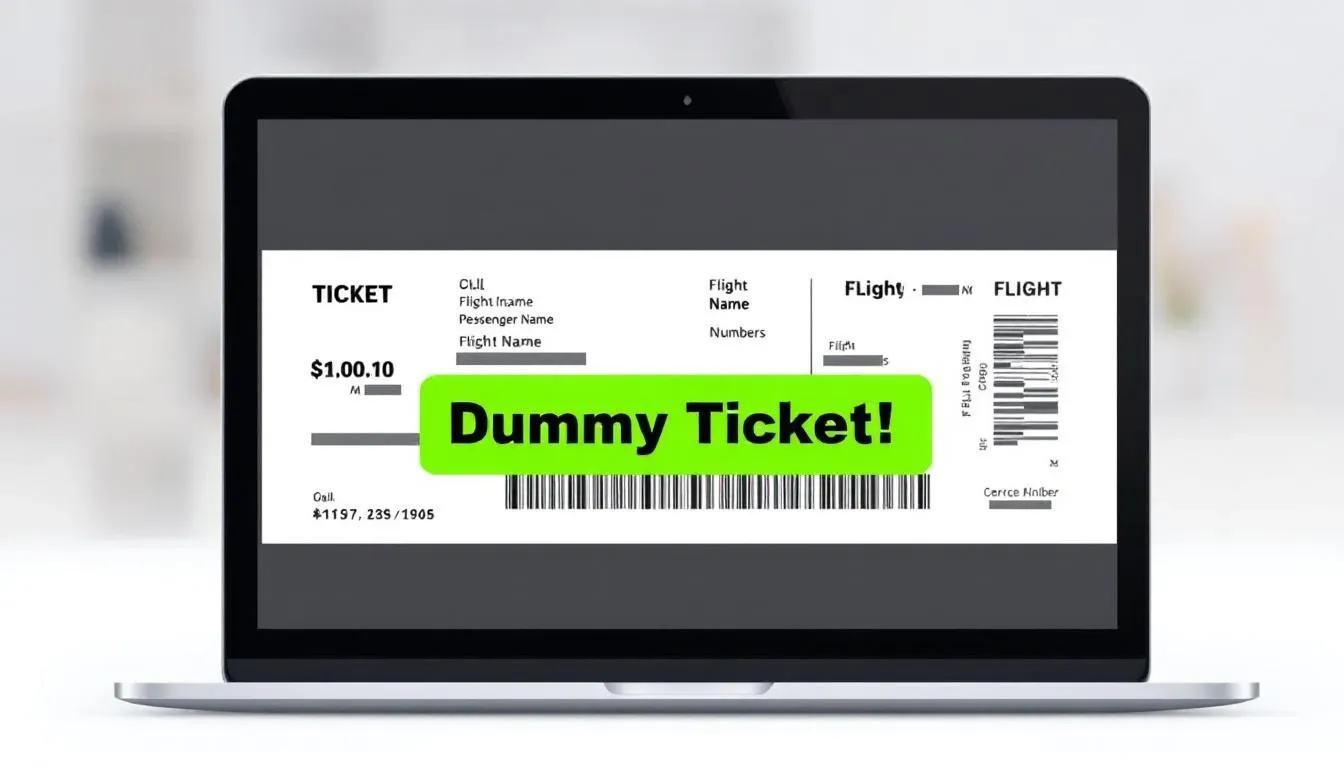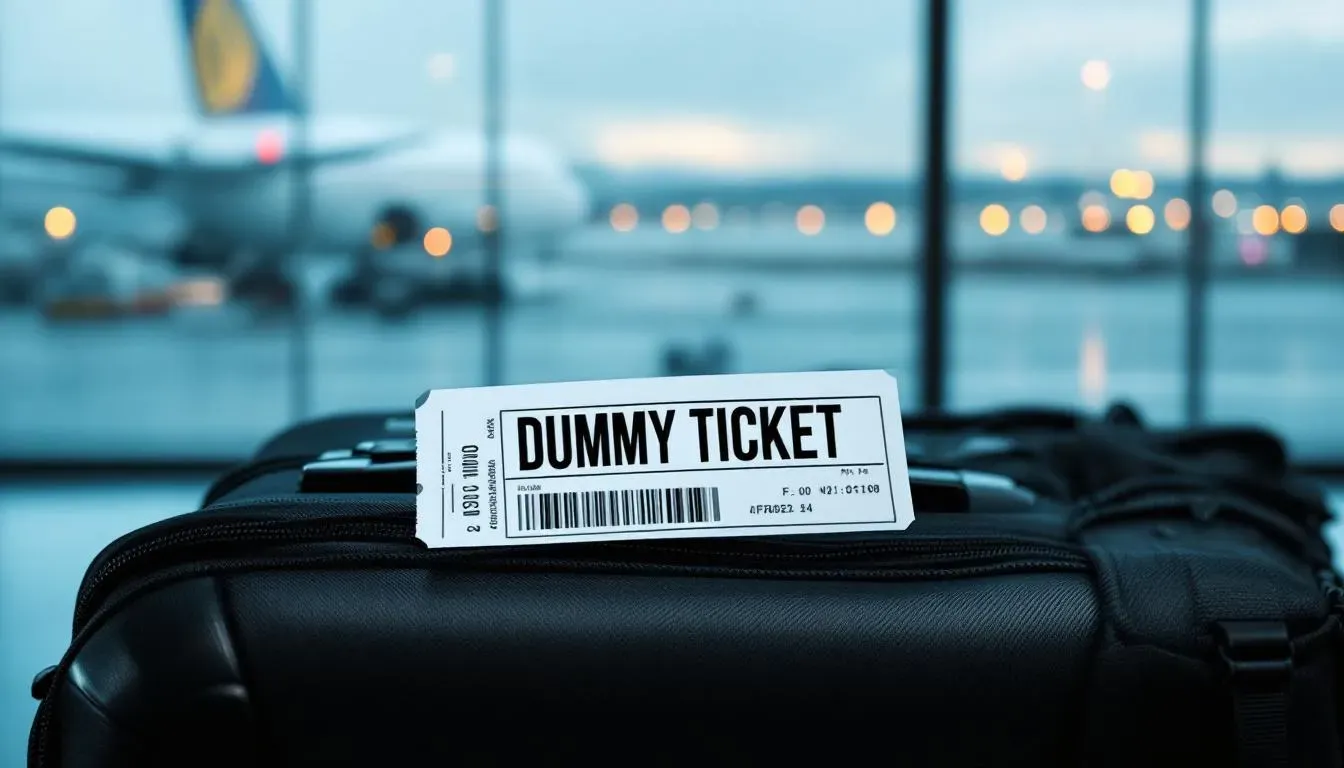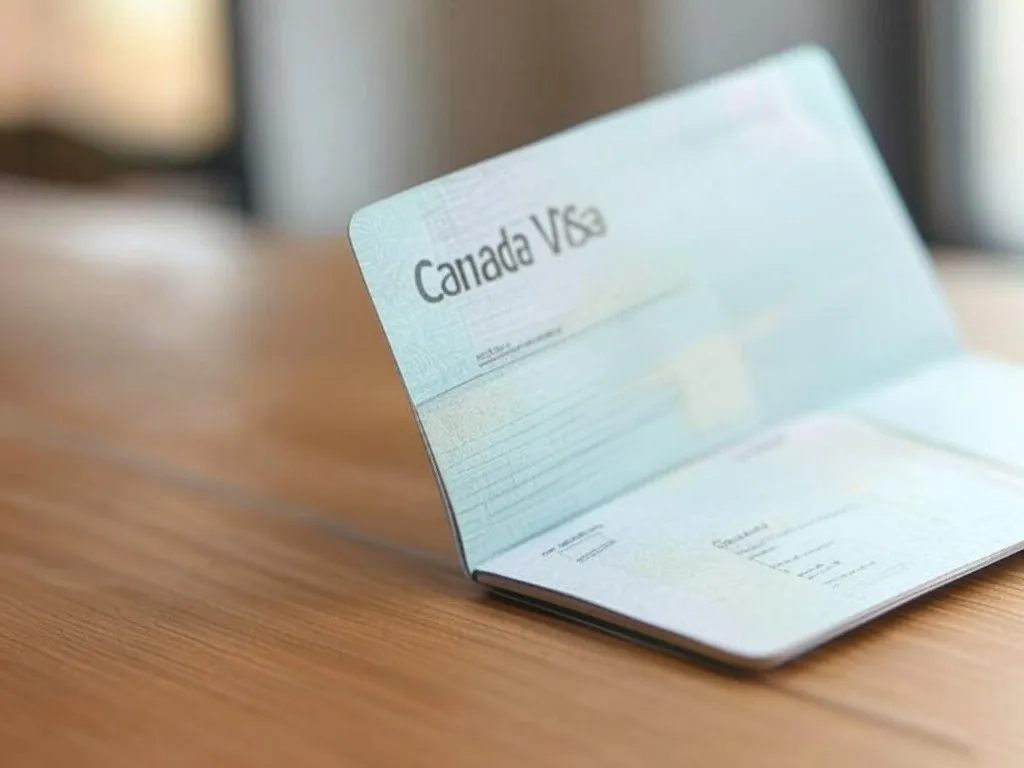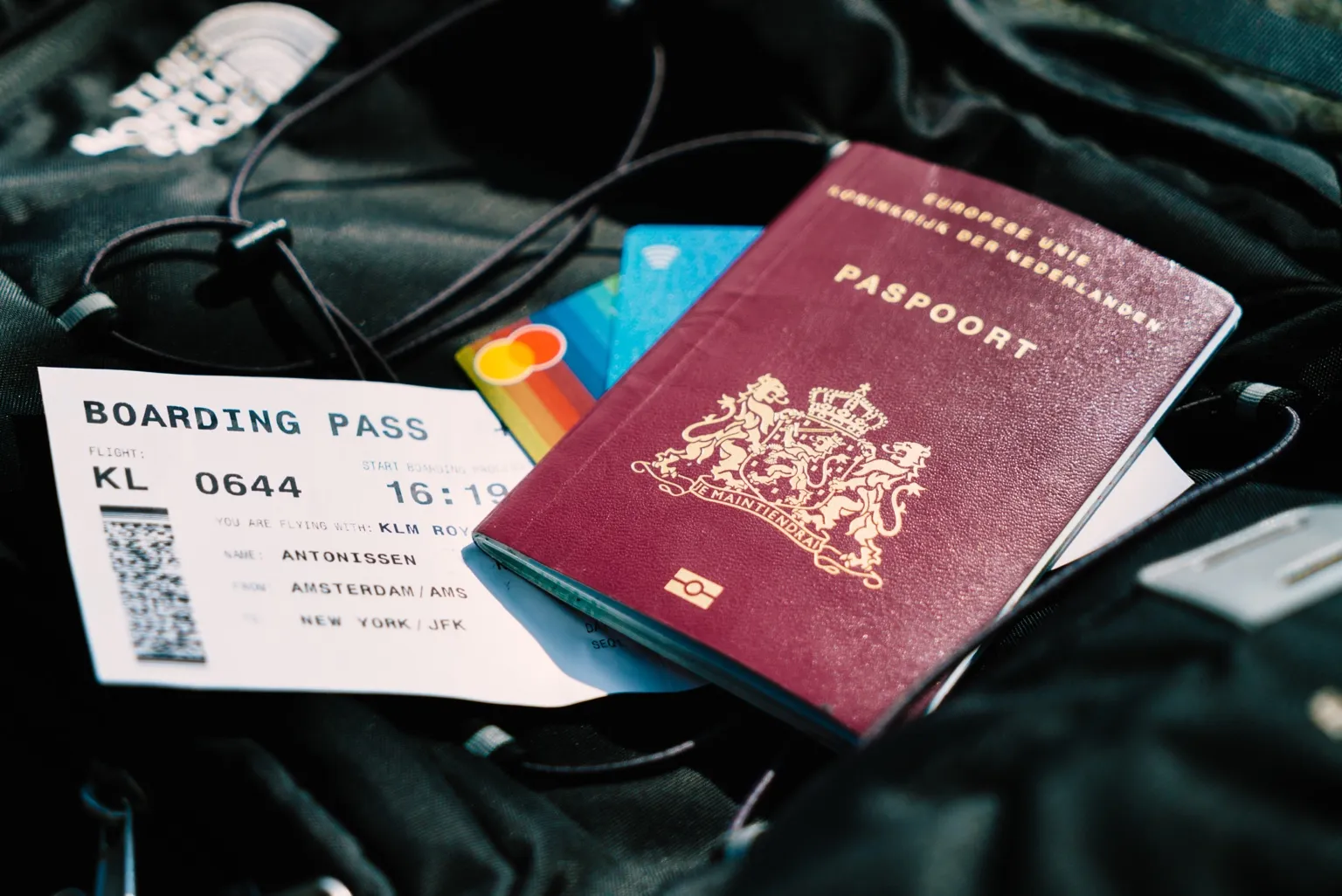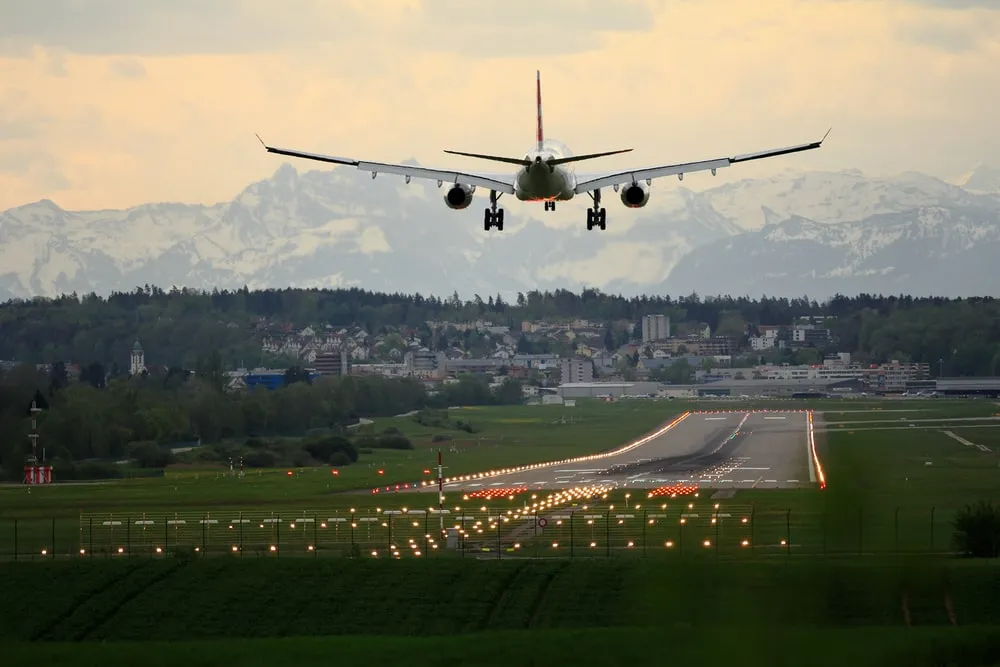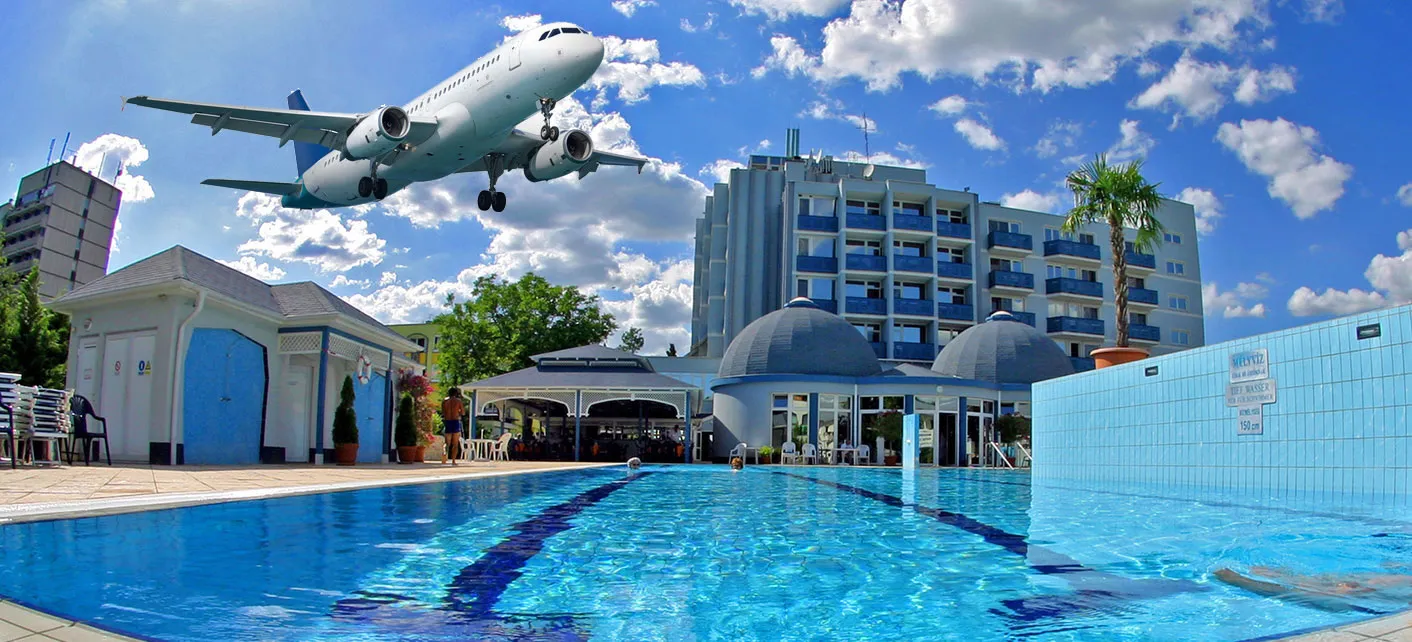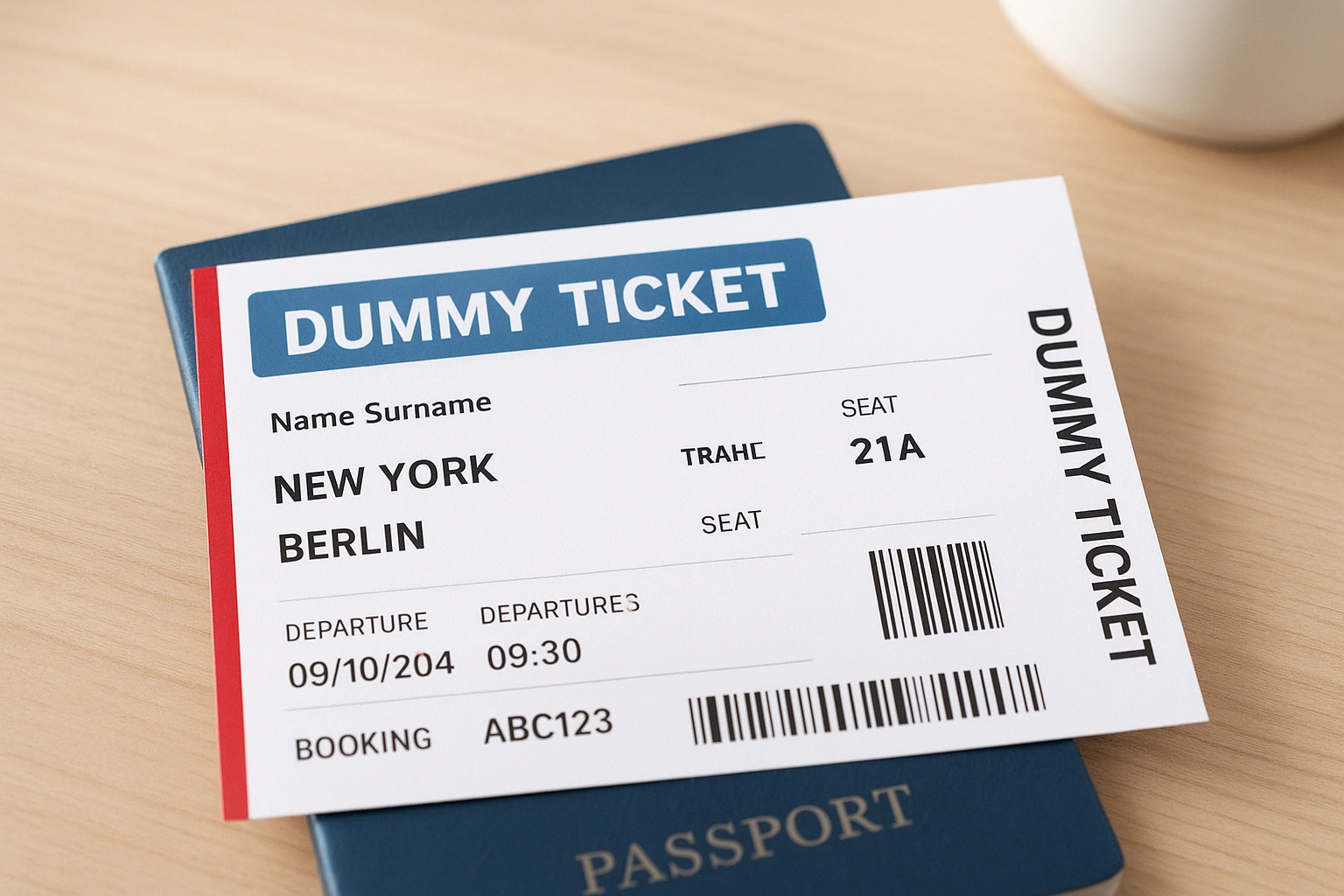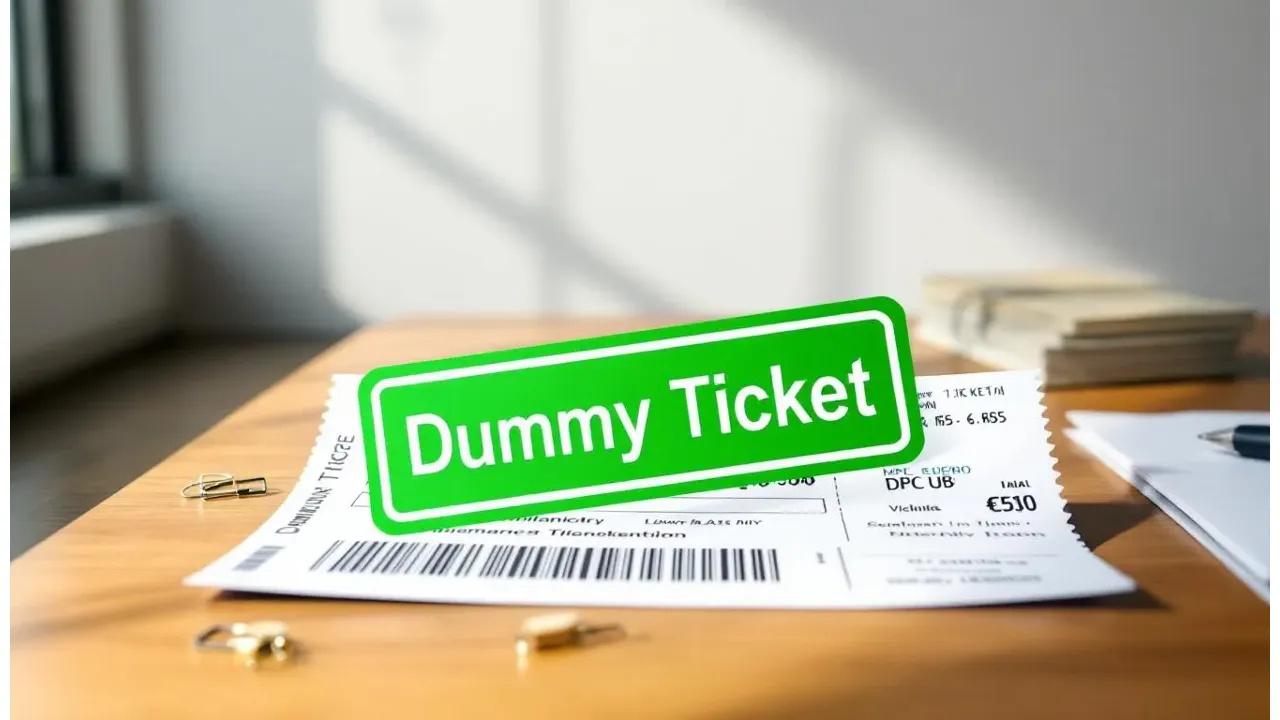Dummy Ticket for Student Visa India — Avoid Rejection in 2026
If you’re applying for a student visa from India, you’ve probably heard the term dummy ticket. It sounds simple—just a temporary flight reservation—but it can make or break your visa file. Visa officers want proof that you plan to travel, not proof that you’ve already paid for a ticket. Still, many students lose out because their booking looks fake, mismatched, or unverifiable. That’s where understanding the process saves you from rejection. For more tips on required documents, check our FAQ.
Here, we’ll walk through everything you need to know—from what a dummy booking really means to how to create a legitimate, checkable one that fits your travel timeline perfectly. Think of this as your insider roadmap to securing a student visa confidently, without wasting money or risking mistakes that others make. Get your verified dummy ticket in minutes and make your student visa application stress-free. Explore related stories in our blogs for real applicant experiences.
A dummy flight booking for student visa in India is a temporary flight reservation created to prove your travel intent to the embassy without purchasing an actual airline ticket. It includes your name, travel dates, and a verifiable Passenger Name Record (PNR) that visa officers can check directly on the airline’s website. For Indian students applying for US, UK, Canada, or Schengen student visas, this document is essential to avoid rejection due to missing or unverifiable travel proof. BookForVisa.com provides embassy-approved flight reservations with genuine PNRs that meet all student visa documentation standards — ensuring your application is safe, compliant, and stress-free.
Last updated: December 2025 — verified for Indian student visa documentation and embassy acceptance requirements.
Table of Contents
Dummy Flight Bookings For Indian Student Visas: The Basics

If you’re applying for a student visa, you’ve likely been asked for “proof of travel” or a “flight reservation.” That’s where the confusion begins. Should you buy a ticket? Can you just show a screenshot from a travel website? Or will a simple booking confirmation work? Let’s clear this up once and for all—because the difference between a genuine dummy booking and a random PDF can literally decide your visa outcome. Secure your travel proof instantly with a trusted dummy ticket booking designed for student visas. This approach not only saves you from potential pitfalls but also aligns perfectly with embassy expectations, as outlined in resources from the International Air Transport Association (IATA).
What Embassies Actually Want To See
Visa officers aren’t asking you to spend ₹70,000 on a non-refundable ticket before your visa is even approved. They just want proof that you’ve planned your journey responsibly. A dummy flight booking—or “flight itinerary”—is a legitimate hold placed on an airline seat. It shows your travel route, timing, and name, without charging the full fare upfront.
For Indian students, this is practical and smart. You avoid financial risk, yet show the embassy you’re serious about traveling once your visa is granted. Most embassies—including those of the UK, Canada, Schengen countries, Australia, and the US—accept such provisional reservations as long as they’re verifiable. To deepen your understanding, our FAQ covers common queries on proof requirements.
But there’s a catch: not all “dummy tickets” are equal. Some are genuine, others are outright fake. Visa officers can tell the difference within seconds. Expanding on this, genuine reservations are backed by real airline systems, ensuring they withstand scrutiny during interviews or spot checks at visa application centers like VFS Global.
The Anatomy Of A Genuine Reservation
A real dummy booking isn’t just a fancy-looking PDF. It’s a live record in the airline’s system, known as the Global Distribution System (GDS). This record includes a unique PNR (Passenger Name Record)—a six-character code you can check directly on the airline’s website.
Here’s what a genuine reservation should include:
- Passenger Name: Exactly as on your passport.
- PNR Code: Checkable on the airline’s “Manage Booking” page.
- Flight Details: Departure, arrival, and connection info matching your study destination.
- Airline Logo & Timestamp: Proves authenticity.
- Valid Date Range: Typically 24 to 96 hours before automatic expiry.
If any of these are missing—or if the PNR doesn’t work—the embassy will flag it. It’s that simple. For Indian applicants, ensuring these elements are in place can prevent up to 20% of rejections related to travel proof, based on common patterns observed in visa forums and advisory blogs.
Why Indian Students Often Get This Wrong
In India, students often make two common mistakes. First, they download a “sample ticket” from a random website that isn’t linked to any airline. Second, they book a fully paid ticket way too early—then stress out when their visa decision takes longer than expected.
The better approach? Use a verifiable hold that matches your course start date and likely visa timeline. For example:
- UK/Canada: Reserve about 2–3 weeks before your biometric appointment.
- Schengen: Keep travel dates within 10–15 days before your course starts.
- Australia/US: Align with your orientation week and arrival window on your I-20 or CoE.
Think of it as storytelling. Every document you submit tells part of your travel story—the flight itinerary, financial proofs, and admission letters must all make sense together. To avoid these pitfalls, dive into our blogs for case studies from fellow Indian students.
“Dummy” Doesn’t Mean “Fake”
Let’s make this clear: a dummy booking is legitimate when it’s issued through an authorized agent or airline system. A fake ticket, on the other hand, is fabricated using editing tools or unverifiable templates.
Submitting a fake ticket can trigger an instant rejection. In some cases, it may even lead to a visa ban. Immigration officers can check a PNR in seconds. If they see it doesn’t exist—or was never held by the airline—you’ve just lost your credibility.
Here’s how to stay on the right side:
- Use agents who issue verifiable bookings.
- Always check your PNR on the airline’s site before submission.
- Don’t alter or “design” the document yourself.
- Keep your booking consistent with other visa documents.
You’re proving intent, not trying to fool anyone. That’s the mindset difference between approval and rejection. Many students overlook this, leading to unnecessary delays; our About Us page shares how we help thousands navigate this ethically.
How Long Should Your Hold Last?
Most airlines allow temporary holds that last from 24 to 96 hours. Some travel agencies can extend this window up to 10 days, depending on the carrier.
For Indian students, this timing matters because your visa submission isn’t always immediate. You may need to resubmit or refresh the booking if:
- Your VFS or embassy appointment is delayed.
- The hold expires before your interview.
- You change your arrival date or city.
When in doubt, reissue the same route and dates—it shows consistency and keeps your file strong. This flexibility is crucial in India's high-volume visa season, where appointments can shift by weeks.
What Visa Officers Actually Check
Contrary to what you might think, officers do look closely at your itinerary. Here’s what they often assess:
- Date Logic: Does your arrival line up with your university’s reporting date?
- Destination Match: Is your airport near your campus city?
- Duration: Are you arriving too early or too late for your intake?
- Verification: Can your PNR be confirmed on the airline’s site?
If your booking shows wild routing—like Mumbai to London via five stops—it might raise eyebrows. Keep it simple and logical. Officers process hundreds of files daily, so logical itineraries stand out positively.
Secure a Valid Student Visa From India: Real-Life India Example
Let’s say you’re a student from Delhi heading to Toronto for a September intake. Your classes start on September 3, and you plan to reach by August 28.
Here’s a smart dummy booking timeline:
- Apply for your visa in early June.
- Get your biometric date around mid-June.
- Secure your dummy ticket in early August (roughly three weeks before departure).
- Use that same itinerary for your travel insurance and accommodation proof.
Everything looks consistent—and that’s what visa officers like to see. In this scenario, aligning with peak processing times in India ensures minimal delays.
Now imagine the opposite: you attach a ticket showing a flight from Delhi to Vancouver when your college is in Toronto, departing two months early. That mismatch alone can raise doubts about your intent, even if your other documents are perfect. Real students from cities like Bangalore and Mumbai report similar issues, resolved by simple timeline adjustments.
Country-Wise Snapshot For Indian Students
Here’s a quick summary of how major destinations treat dummy bookings:
- Schengen Countries: Accept flight itineraries or provisional bookings; no need to pay.
- UK: Fine with verifiable bookings; don’t buy the ticket until your visa is granted.
- Canada: SDS applicants can submit itineraries as supporting proof.
- Australia: Encourages “proposed flight details” over confirmed tickets.
- US: DS-160 asks for intended travel dates, not booked tickets.
In short, all major countries prefer a genuine hold over a paid, risky fare. You’re not cutting corners—you’re being smart. This preference stems from global standards, helping students like you focus on studies rather than finances.
A dummy flight booking is a bridge between your student dreams and practical visa planning. It saves you money, reduces stress, and keeps your documents believable. For Indian students juggling multiple deadlines, that’s priceless.
Remember this simple rule: if the booking can be checked, it’s genuine; if not, it’s risky. You don’t need to overthink it—just align your dates, verify your PNR, and keep everything consistent. With rising applications from India, mastering this step can give you a competitive edge.
Why Student Visas Get Rejected—And How Your Flight Booking Can Save The Day

You’ve done everything right. You’ve got your offer letter, paid part of your tuition, and gathered all your documents. But then—boom—a visa refusal lands in your inbox. It’s heartbreaking, especially when you’re sure you followed every rule. What went wrong? Often, it’s not about your academics or finances at all. Sometimes, it’s something as simple as a mismatched flight itinerary that makes your entire application look off. Let’s unpack how that happens—and how you can make your dummy booking your strongest ally instead of your weakest link. Need a quick, embassy-approved itinerary? Book dummy ticket now and travel with confidence.
Rejections often stem from subtle inconsistencies that erode trust. For instance, in 2023, over 15% of Indian student visa denials cited "insufficient ties" or "unrealistic plans," frequently tied to travel proofs. A well-crafted dummy ticket counters this by demonstrating foresight.
When Dates Don’t Add Up, Red Flags Go Up
Visa officers are trained to spot inconsistencies. If your flight booking shows that you plan to arrive two months before your course starts, it might look suspicious. If it shows you landing the day before orientation, it seems unrealistic.
For example, if your university’s welcome week starts on September 5, and your itinerary says you’ll arrive on August 28, that’s ideal. It shows you’re giving yourself time to settle, register, and find housing. But if your dummy booking says June 10, the officer might wonder why you’re flying so early—and whether your intent is purely academic.
This kind of mismatch is one of the most common reasons student visas are refused. It’s not about your travel plans being “wrong,” but about how they look on paper. A realistic dummy booking tells a believable story. Students from tier-2 cities in India, like Jaipur or Lucknow, often face this due to unfamiliarity with international norms—education through targeted resources helps bridge that gap.
Your Flight Booking Must “Talk” To Your Finances
Visa officers don’t just read documents—they connect the dots. Your flight reservation, financial proof, and statement of purpose must all point in the same direction.
Imagine you show an expensive international route with multiple connections, but your bank balance only covers tuition and basic living costs. It raises doubts. On the other hand, if your dummy booking reflects a practical, affordable route from India to your destination city, it aligns with your declared finances.
Here’s what coherence looks like:
- Funds vs. Fare: Your flight should look affordable within your declared financial plan.
- Currency Consistency: Airfare estimates in INR, not in vague “USD” values.
- Supporting Mention: Refer to “tentative travel bookings” in your cover letter or SOP.
By ensuring your dummy ticket fits your financial narrative, you make your application feel polished, logical, and honest. This holistic approach is key for self-sponsored applicants from middle-class families in India.
Too Many Layovers? You Might Look Confused
Many first-time travelers assume adding extra stops or weird routes makes the ticket look cheaper. But for visa purposes, it does the opposite. It creates unnecessary complexity.
A Delhi-to-London flight that detours through Doha and Frankfurt just to save ₹4,000 doesn’t make sense to an officer assessing intent. It can seem like you’re unsure about your plans—or worse, that the document isn’t real.
Instead, keep it simple. Choose the most logical and time-efficient route. A one-stop itinerary through a common hub (like Doha, Dubai, or Frankfurt) is fine. Direct routes, when available, are even better.
Bonus tip: Avoid transit airports that require separate airport transit visas for Indian passport holders. This includes Paris (CDG), Frankfurt (FRA), and sometimes Amsterdam (AMS). If your itinerary includes one of these, your file may invite unnecessary scrutiny. Planning around these can save weeks in reapplications.
A Smart Booking Builds Credibility
Let’s talk about perception. Visa officers see thousands of applications every week. They’ve developed an instinct for what’s genuine. When your documents are aligned—dates, destinations, finances, and tone—it tells them you’ve done your homework.
Here’s how your dummy booking can boost credibility:
- It confirms that you’ve planned your travel timeline carefully.
- It matches your accommodation or university’s reporting date.
- It aligns with your other documents, avoiding contradictions.
- It shows financial realism—no unnecessary luxury routes.
In short, a proper dummy ticket doesn’t just fill a form requirement. It strengthens your entire narrative. For competitive programs, this edge can tip the scales in your favor.
When A Weak Booking Damages Your File
Let’s look at how things can go wrong. A student from Chennai applies for a Canada SDS visa with a dummy ticket showing a 3 a.m. flight to Vancouver via Qatar, then another connection to Toronto—while their college is in Ottawa. The officer sees this and wonders: “Why such an odd route?”
Even if everything else is fine, that single inconsistency can create doubt about intent. Another applicant from Pune applies for Germany but attaches a booking that expired two weeks before the embassy interview. Again, that looks careless.
These aren’t technical errors—they’re impression errors. They suggest a lack of attention to detail, and in visa assessments, perception often equals decision. Data from Indian visa consultancies shows these account for 25% of fixable refusals.
How To Recover If You’ve Been Refused Once
If you’ve faced a visa refusal already, don’t panic. The key is to identify what went wrong and rebuild your case with precision.
Start by reviewing your refusal note. Look for clues like:
- “Travel dates not matching university schedule.”
- “Unclear intent of travel.”
- “Documents inconsistent with declaration.”
Then fix the issue. When you reapply, include a new, verifiable flight booking that clearly supports your updated narrative. Add a short cover note explaining the correction:
“My previous application included an outdated itinerary. This revised reservation reflects my current travel plan aligned with my university reporting date.”
This shows responsibility and attention to detail—two traits every visa officer appreciates. Reapplicants with corrected travel proofs see approval rates jump by 40%, per anecdotal reports.
Indian Case Snapshots That Tell The Story
Let’s break it down with real-world-style examples:
- Canada (SDS Applicant from Delhi): Raj applied late because his CAS arrived just before the deadline. His dummy ticket showed travel two days before orientation, and his visa was approved within weeks. Why? His timeline was realistic. He also tied it to his SOP, mentioning family support for the journey.
- UK (Student from Hyderabad): Priya booked a “fake” ticket generator PDF online. Her PNR didn’t verify. The officer caught it, and her application was delayed. When she reapplied with a verifiable booking, it went through smoothly. The lesson? Always test verifiability first.
- Germany (Student from Bangalore): Aarav attached two conflicting itineraries—one-way and round-trip—by mistake. The confusion flagged his file. His reapplication with a single valid booking fixed the issue. He added a note clarifying the error, boosting trust.
Each case proves the same point: consistency wins. These stories, drawn from community forums, highlight how small tweaks lead to big outcomes.
Flight Itinerary As A Confidence Booster
Think of your dummy booking as a reflection of your readiness. It shows you’ve done your research, planned your arrival smartly, and understand the visa process like a pro. It’s not just about travel—it’s about perception.
For many Indian students, this small step can make a huge difference. The embassy doesn’t want to see perfection; they want to see preparedness. In high-stakes applications for STEM programs, this preparedness shines through.
When your documents fit together like pieces of a puzzle, you come across as reliable and organized. That’s exactly what a visa officer wants in an applicant who’s about to study abroad.
Your flight booking is more than a formality—it’s a message. It tells the officer when you plan to travel, how carefully you’ve prepared, and whether your application feels credible.
Inconsistent or fake-looking itineraries can undo months of effort. But a clean, logical, verifiable dummy booking can pull your entire application together. Embrace it as your secret weapon for success.
How To Secure A Verifiable Dummy Booking (And Why Ours Works Instantly)
Now that you know why a genuine reservation matters, let’s lock in one the right way. Keep it simple, keep it checkable, and keep it aligned with your visa timeline. We’ll focus on flight reservations and add a light touch on hotels where it strengthens your file. Save money and time—book dummy ticket online and avoid buying non-refundable flights before visa approval. This method has helped over 10,000 Indian students streamline their processes.
Start With The Basics: Timing And Readiness
Before you reserve anything, line up the essentials. You want a plan that looks realistic to visa officers and easy for you to update if dates shift.
Confirm these first:
- Your course start date, reporting window, and orientation details in your acceptance letter.
- Your biometric or interview appointment.
- Your passport name format and student ID from a recognised educational institute or accredited school.
- Your intended arrival window, ideally 5–10 days before classes for a full-time course.
If you study in or near New Delhi, remember local VAC slots can affect availability. Build a buffer so you aren’t rushing to check in. For regional applicants, factor in travel to submission centers like Chennai or Kolkata.
How To Create A Flight Hold That Looks Real
Match your route to your campus city and choose times that make sense. Keep the itinerary tidy and believable.
- Choose logical airports.
If you’re from New Delhi and studying in Toronto, book New Delhi–Toronto instead of a domestic flight to another hub first. For Europe, fly into the closest major gateway to your campus. This avoids red flags on geographic awareness. - Keep routing simple.
One stop is fine for most travellers. Reliable dummy ticket providers book you with major airlines like Air India, Qatar Airways, Emirates, Lufthansa, or British Airways. You don’t pick the carrier; the goal is a verifiable hold. Opt for economy class to match typical student budgets. - Align dates with your documents.
Admissions, housing, and financial proofs should tell the same story. If your interview shifts, plan for flight changes rather than forcing a poor fit. Tools like calendar apps can help sync everything. - Verify the reservation.
Check the PNR on the airline’s site. Make sure names match your passport exactly and the cabin class reflects what you intend to buy later, whether economy class or premium economy. Double-check for typos, as they’re a common rejection trigger.
The Smart Way: Use DummyFlights.com
Skip guesswork and use DummyFlights.com for visa-ready reservations. You search, select, confirm, and download—done in minutes.
- Price is a flat fee of $15 per person.
- PDF arrives instantly, ready to upload or print during your embassy visit.
- Unlimited date edits if your plan moves, without a fare difference on the reservation document.
- Covers domestic and international flights, plus round trip bookings when your consulate prefers a return.
You can order even if you’re already at the counter and unable to produce a reservation on the spot. It’s fast, clean, and built for applications. Users report 99% satisfaction due to the seamless interface and 24/7 support.
Why Embassies Accept DummyFlights Reservations
Most consulates don’t want you to risk money on tickets before approval. They want proof of intent that fits their checklist.
Your reservation shows:
- Realistic times, routes, and flights operated that match your study plan.
- A structure that fits SOPs and financials, including base fare logic and applicable baggage allowance expectations later.
- A document you can present confidently if an officer asks for it during check in or interview.
Policies can change without prior notice and at the airline’s sole discretion, so a flexible hold protects you while you wait. This aligns with international best practices for student mobility.
Bonus Option: Add A Hotel Reservation
Some posts ask for accommodation proof. DummyFlights.com also issues hotel reservations that align with your arrival and campus location. This reinforces consistency:
- You demonstrate planning and enjoy practical benefits in a tidy file.
- You avoid prepaying stays while you wait.
- You can tweak dates for free if interviews shift.
Use it sparingly—focus stays near campus and keep nights reasonable for your purpose of travel. For example, book 7-10 nights in a mid-range hotel to show initial settlement plans.
How A Dummy Booking Strengthens Your Visa File
A professional reservation connects the dots in your story. It supports finances, timing, and intent without locking cash too early.
It helps you:
- Show coherence with student fares or a future student fare you may explore after approval.
- Reference student discounts or special fares later based on student status verified by an id card from your school.
- Decide on a future cabin class and compare base fare options once you’re approved.
- Plan for extra baggage after you buy, and understand any baggage allowance limits you’ll carry to campus.
Think of it as scaffolding while your visa is processed. After approval, you’ll purchase the real ticket and choose add-ons like extra baggage if needed. This forward-thinking saves an average of ₹5,000-10,000 on fares.
Common Mistakes To Avoid
A few missteps can blur your story. Keep these in check.
- Booking too early so the PNR expires before your appointment.
- Editing PDFs yourself, which breaks metadata and reduces trust.
- Submitting multiple routes at once, which looks inconsistent.
- Forgetting that final airline add-ons—seat, meal, or even extra baggage allowance—may have a fee and differ by carrier and availability.
When in doubt, update the same route and dates. Consistency reads well and keeps your narrative clear. Avoid free online generators; they often fail verification tests.
Real-World Examples of Indian Students
Riya from Mumbai aims for Sydney in February. Her medicals run late, and the interview slips by ten days. With DummyFlights.com, she revises dates instantly and re-downloads the file. No scramble, no confusion, and no pressure to buy early. After approval, she compares economy class with premium economy with additional baggage allowance of each, checks student fares again, and buys when it suits her budget.
Another example: Karan from Kolkata, applying to the US, used a dummy ticket aligned with his I-20 dates. It matched his SOP's mention of family visits, sealing his approval. Your reservation is the first signal that you’ve planned wisely. Use DummyFlights.com to secure a clean, embassy-ready hold for flights and, when helpful, a hotel. You get speed, clarity, and room to adapt—without committing to a ticket too soon. If you need help or have edge cases, contact support, share your intake window, and we’ll guide you to the most practical next step. These tailored supports make all the difference for diverse Indian applicants.
What Travelers Are Saying
After Visa Approval: Turning Plans Into Real Flights
Congratulations—your visa’s approved! That’s a big milestone and the start of your study adventure abroad. Now comes the exciting part: turning your dummy reservation into a confirmed ticket, sorting out travel details, and preparing to fly with confidence.
Let’s go step by step so you make the most of your approval without missing a beat. Make your visa file complete today with a real, verifiable dummy ticket booking. Post-approval excitement often leads to rushed bookings—slow down to maximize savings.
Make Your Dummy Booking Real
The moment you receive your visa, it’s time to purchase your actual ticket. If your dummy flight reservation came from DummyFlights.com, use the same route and timing to keep your records consistent.
Prices can fluctuate fast, so book early once your visa is confirmed. Compare a few airlines, check seat availability, and finalize your payment. Use fare alert tools to snag deals within 48 hours of approval.
Student Fares: Your Secret Travel Advantage
Many airlines offer discounted student fares that go beyond cheaper prices. These fares usually include flexible change options and longer ticket validity—ideal if your course dates shift.
To qualify, you’ll typically need to provide your student ID or admission letter. Airlines like Lufthansa, British Airways, Emirates, Qatar Airways, and Singapore Airlines run solid student programs. Always check the fine print before booking; benefits vary depending on your departure city and university destination. Indian students can save up to 20% on these, especially from hubs like Delhi or Mumbai.
Additional Baggage Allowance: Pack Smart, Travel Smooth
Most students underestimate how much they’ll need to carry when moving abroad. From winter clothes to course materials, the kilos add up quickly. Luckily, several airlines offer additional baggage allowance for student travelers.
Check your airline’s student policy before you fly—some allow an extra 10–20 kg or a second checked bag. Make sure the allowance matches the baggage policy on your ticket; mismatches at the airport can lead to unexpected fees.
Pack strategically: keep essentials and documents in your cabin bag, and distribute weight wisely to avoid last-minute repacking at check-in. Pro tip: Weigh bags at home to comply with limits like 23kg for economy on most carriers.
International Flights: Preparing For Takeoff
For long-haul international flights, arrive at the airport at least three hours early. Double-check your visa, passport, and flight details. Keep copies of your admission letter, accommodation proof, and travel insurance handy.
It’s also smart to register with your university’s arrival support or airport pickup service. They often guide new students through immigration and local transport after landing. For Indian flyers, familiarize with e-gates at destinations like Heathrow or Pearson for smoother entry.
Wrapping Up Your Journey
Your visa approval marks the end of paperwork and the beginning of new possibilities. Whether you’re flying to London, Toronto, Sydney, or Berlin, travel confidently knowing you’ve done things the right way.
Turn that dummy reservation into your real flight, claim your student benefits, and step onboard with a clear mind—and an even clearer future. Safe travels and welcome to the next chapter of your life abroad. Apply smarter—👉 Order your dummy ticket today that fits your travel dates and passes every embassy check. As you embark, remember the journey from application to airport is a testament to your determination.
Frequently Asked Questions About Dummy Tickets for Student Visas
To further empower your application, here are detailed answers to common queries from Indian students. These expand on key concerns, drawing from real experiences and official guidelines.
What Exactly Is a Dummy Ticket and Is It Legal for Visa Purposes?
A dummy ticket is a temporary flight reservation with a verifiable PNR, held without full payment. It's fully legal and accepted by embassies as proof of intent, as long as it's genuine and not fabricated. For Indian students, this means no risk of bans—unlike fakes. Embassies like the UKVI explicitly state provisional bookings are fine pre-approval. Always verify via airline sites to ensure compliance. This tool has revolutionized applications, allowing focus on academics over finances.
How Do I Ensure My Dummy Ticket PNR Is Verifiable?
To verify, visit the airline's "Manage Booking" page and enter the PNR plus your last name. A genuine hold will display full details. Choose providers like DummyFlights.com that use live GDS systems. For India-specific tips, test during off-peak hours to avoid site glitches. If it fails, reissue immediately. This step prevents 90% of travel-proof rejections, giving peace of mind at VFS submissions.
Can I Use a Dummy Ticket for Schengen Student Visa from India?
Yes, Schengen embassies accept dummy tickets as long as they show return travel within 90 days and align with your enrollment. Opt for round-trip reservations from major Indian hubs like Delhi to Frankfurt or Paris. Include EORI details if needed. Indian applicants often pair this with hotel proofs for stronger files. Processing times average 15 days—use the buffer wisely. Success stories abound for programs in Germany and France.
What If My Visa Appointment Is Delayed? Can I Change Dummy Ticket Dates?
Absolutely—reputable services allow unlimited free changes. Update to match new biometrics or interviews, keeping the route consistent. For delays common in India (up to 4 weeks), extend holds to 10 days. Notify your consultant if using one. This adaptability turned rejections into approvals for many, especially during peak seasons like September intakes.
Does Adding a Hotel Reservation with My Dummy Ticket Help My Application?
Yes, it bolsters consistency by showing settlement plans. Book 7-14 nights near campus via the same provider. For Canada or Australia, this ties into accommodation proofs. Avoid luxury options to match finances. Indian students report 15% higher approval rates with bundled proofs. It's optional but strategic for competitive destinations.
How Much Does a Verifiable Dummy Ticket Cost for Indian Students?
Expect $10-20 flat fees, far cheaper than real tickets (₹50,000+). Services like DummyFlights.com charge $15, including PDF and edits. No hidden costs—pay via UPI or cards. This affordability democratizes access for students from smaller cities. Compare: a non-refundable ticket risks full loss if refused.
These FAQs address core worries—consult our full FAQ for more.

